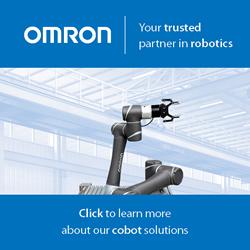Collaborative Robots and Robot Safety
RoboticsTomorrow - Special Tradeshow Coverage
AUVSI XPONENTIAL 2018
AI Enabling Intelligent Robotic Picking
Electric Grippers
CCD vs. CMOS
5 Myths About Robots Stealing Jobs
Cognitive Technology and RPA
A Guide to Lasers for Robots (Part 2)
What Are Autonomous Robots, and Why Should We Care?
Artificial Skin for Robots
Why Custom Robot Integrations With Rotary Index Drives Makes Financial Sense for a Variety of Manufacturing Applications
New Exoskeleton is Revolutionizing Work Processes
How Robots Are Changing the Way We Do Surgery
Carnegie Mellon Research - Invisible, Stretchable Circuits
The Many Uses of Bellows
Records 1096 to 1110 of 1967
First | Previous | Next | Last
Featured Product

